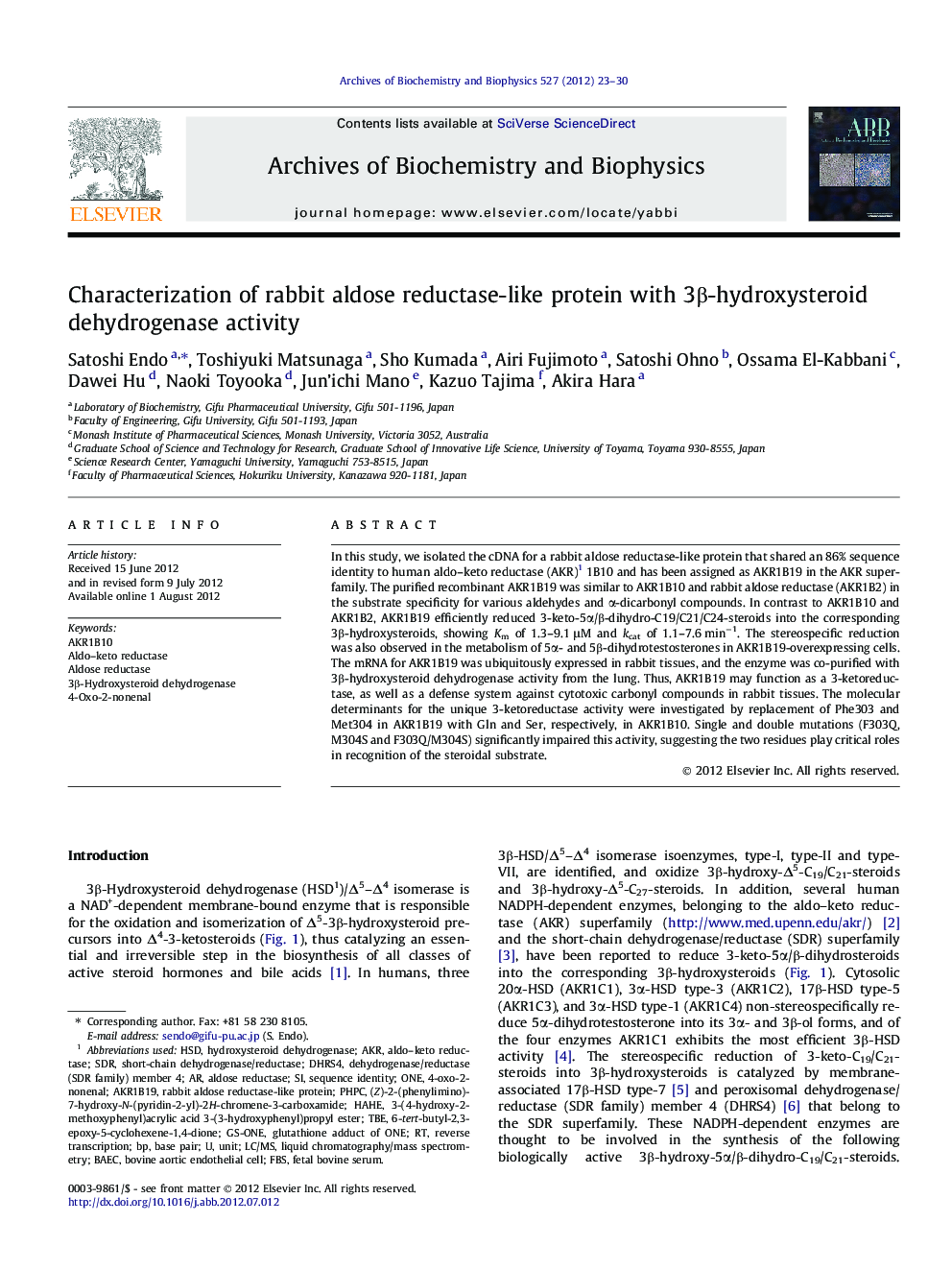| Article ID | Journal | Published Year | Pages | File Type |
|---|---|---|---|---|
| 1925447 | Archives of Biochemistry and Biophysics | 2012 | 8 Pages |
In this study, we isolated the cDNA for a rabbit aldose reductase-like protein that shared an 86% sequence identity to human aldo–keto reductase (AKR)1 1B10 and has been assigned as AKR1B19 in the AKR superfamily. The purified recombinant AKR1B19 was similar to AKR1B10 and rabbit aldose reductase (AKR1B2) in the substrate specificity for various aldehydes and α-dicarbonyl compounds. In contrast to AKR1B10 and AKR1B2, AKR1B19 efficiently reduced 3-keto-5α/β-dihydro-C19/C21/C24-steroids into the corresponding 3β-hydroxysteroids, showing Km of 1.3–9.1 μM and kcat of 1.1–7.6 min−1. The stereospecific reduction was also observed in the metabolism of 5α- and 5β-dihydrotestosterones in AKR1B19-overexpressing cells. The mRNA for AKR1B19 was ubiquitously expressed in rabbit tissues, and the enzyme was co-purified with 3β-hydroxysteroid dehydrogenase activity from the lung. Thus, AKR1B19 may function as a 3-ketoreductase, as well as a defense system against cytotoxic carbonyl compounds in rabbit tissues. The molecular determinants for the unique 3-ketoreductase activity were investigated by replacement of Phe303 and Met304 in AKR1B19 with Gln and Ser, respectively, in AKR1B10. Single and double mutations (F303Q, M304S and F303Q/M304S) significantly impaired this activity, suggesting the two residues play critical roles in recognition of the steroidal substrate.
Graphical abstractFigure optionsDownload full-size imageDownload high-quality image (78 K)Download as PowerPoint slideHighlights► Rabbit AKR1B10-like protein (AKR1B19) efficiently reduces 4-oxo-2-nonenal. ►AKR1B19 also reduces 3-ketosteroids into 3β-hydroxysteroids. ► Two residues (Phe303 and Met304) play critical roles in binding of the steroids.
